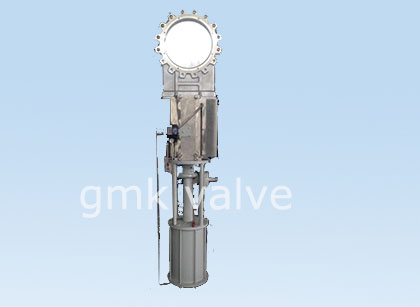What is Pneumatic Actuator?

A pneumatic actuator utilizes compressed air to move the valve plug or disc. The compressed air is transmitted through a control valve to the actuator, which then converts the air pressure into mechanical motion to operate the valve stem. There are two types of pneumatic actuators, namely diaphragm and piston actuators.
Diaphragm Actuators
A diaphragm actuator uses a flexible membrane that separates two chambers. One chamber is connected to the air supply, and the other is connected to the valve stem. As compressed air enters the actuator, it forces the diaphragm to move and push the valve stem, either to open or close the valve.
Piston Actuators
A piston actuator comprises a cylinder, piston, and springs. The piston is connected to the valve stem, and the cylinder is where the compressed air pushes the piston to move the valve. The springs are used to counterbalance the force generated by the compressed air, which ensures that the valve remains in its position when there is no air pressure.
Advantages of Pneumatic Actuators
1. Easy to Operate
Pneumatic actuators are easy to operate, and they usually require minimal maintenance. With proper installation and calibration, these devices can work efficiently and reliably for extended periods.
2. Low Cost
Compared to the electric actuator, the pneumatic actuator is less expensive. The initial cost of installation and maintenance are also relatively low.
3. High Tolerance to Extreme Conditions
Pneumatic actuators are highly tolerant to extreme temperatures and pressure fluctuations. This feature makes them useful in various applications where the conditions change regularly.
High-Pressure Control Valve
A high-pressure control valve is a valve designed to operate at high pressures. These valves are mostly used in the oil and gas industry, where the fluids often carry high pressures. The high-pressure valves are engineered to withstand the force generated by the pressure.
Applications of Pneumatic Actuators and High-Pressure Control Valves
1. Oil and Gas Industry
The pneumatic actuator and high-pressure control valves are vital components in the oil and gas industry. These devices play a significant role in controlling the flow of fluids, gases, and crude oil through pipelines and wells.
2. Power Generation
The pneumatic actuator and high-pressure control valve have applications in the power generation industry. They are used to control the flow of steam and gas through turbines, ensuring that the turbines operate efficiently.
3. Chemical Processing
The chemical processing industry utilizes pneumatic actuators and high-pressure control valves when handling corrosive and hazardous materials. These valves are essential in controlling the flow of these materials to prevent spills and accidents.
Conclusion
The pneumatic actuator is an essential component in many industrial applications. It is a cost-effective and reliable device that is easy to install and operate. When combined with high-pressure control valves, these devices help control the flow of fluids and gases, ensuring that processes run smoothly and safely.